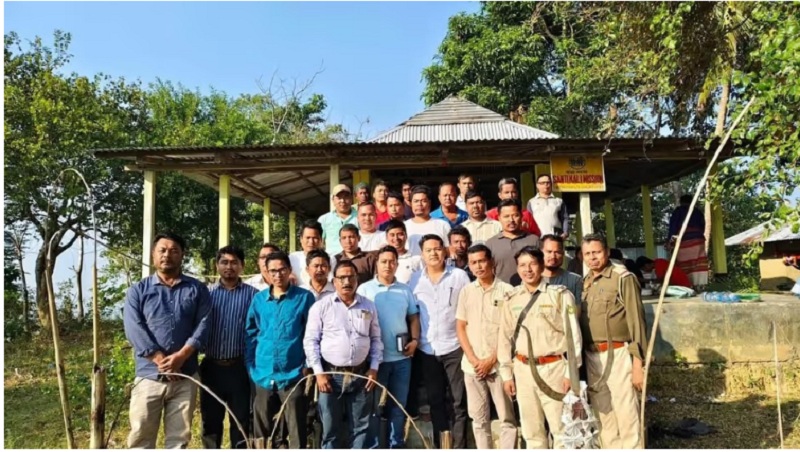Agartala: Tripura‘s sacred pilgrimage site ‘Hapong Raja’, nestled in the Longtharai Hills of the Dhalai district, is set to become a major tourist attraction.
With its profound spiritual importance and breathtaking beauty, the site has the potential to significantly enhance both tourism and the local economy.
Tipra Motha MLA Paul Dangshu recently undertook a site visit accompanied by a delegation consisting of tourism officials, engineers, forest officers, and local leaders to assess the site’s tourism potential.
The visit aimed to strategize the development of vital tourism infrastructure at the site of ‘Hapong Raja’.
Emphasizing the site’s significance, MLA Paul noted that the name ‘Hapong Raja,’ translating to ‘King of Hills,’ holds deep cultural roots, intertwined with the legendary Unakoti story.”
The sacred pilgrimage site, home to the Shiv Mandir on Longtharai Hill, attracts thousands of devotees annually, especially during Makar Sankranti, locally celebrated as Hangrai.
Hapong Raja is managed by the Santikali Mission.
Special rituals and offerings are also conducted during Purnima and Amavasya, underscoring the site’s spiritual relevance.
“This visit was a collaborative endeavor with representatives from the Tourism Department, engineers, forest officers, and local leaders. I am privileged to have the opportunity to contribute to the enhancement of a site rich in spiritual heritage for over a century,” Dangshu said.
He also extended his gratitude to Tourism Minister Sushanta Chowdhury for supporting the development initiative of the site.
To enhance the visitor experience, the development plans include the construction of roads, a water supply system, public toilets, and solar-powered lighting. Other features include a watchtower for panoramic views and various beautification projects.
ALSO READ: Tripura likely to roll out electric trains by February
He stated, “Hapong Raja will become a global tourist destination. The proposed modernization will balance the modernity of the place with the site’s rich spiritual and cultural heritage.”















